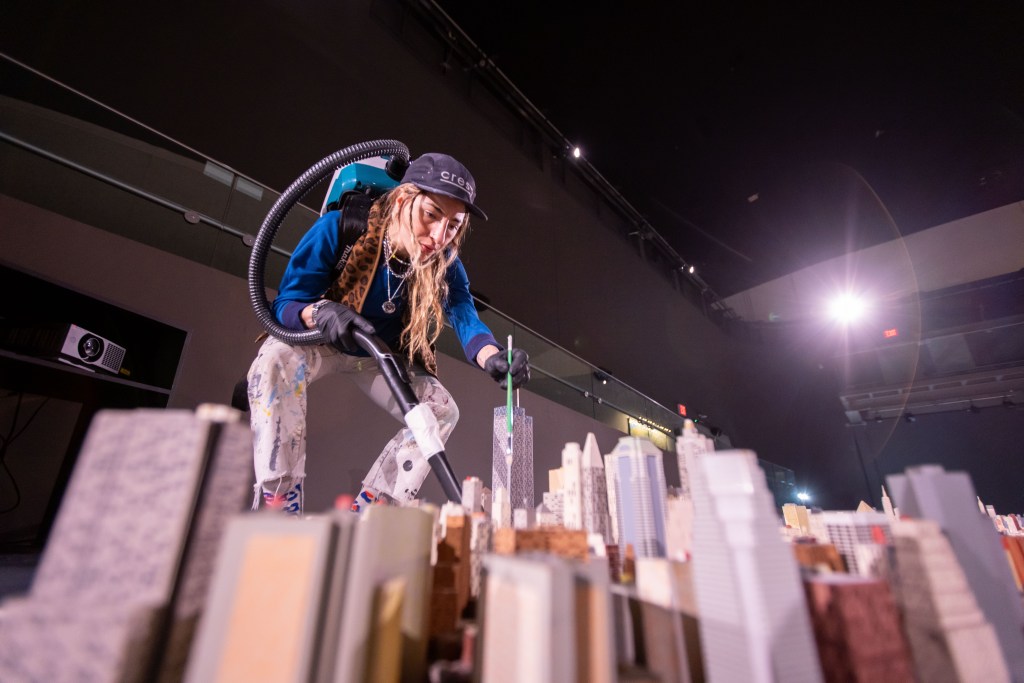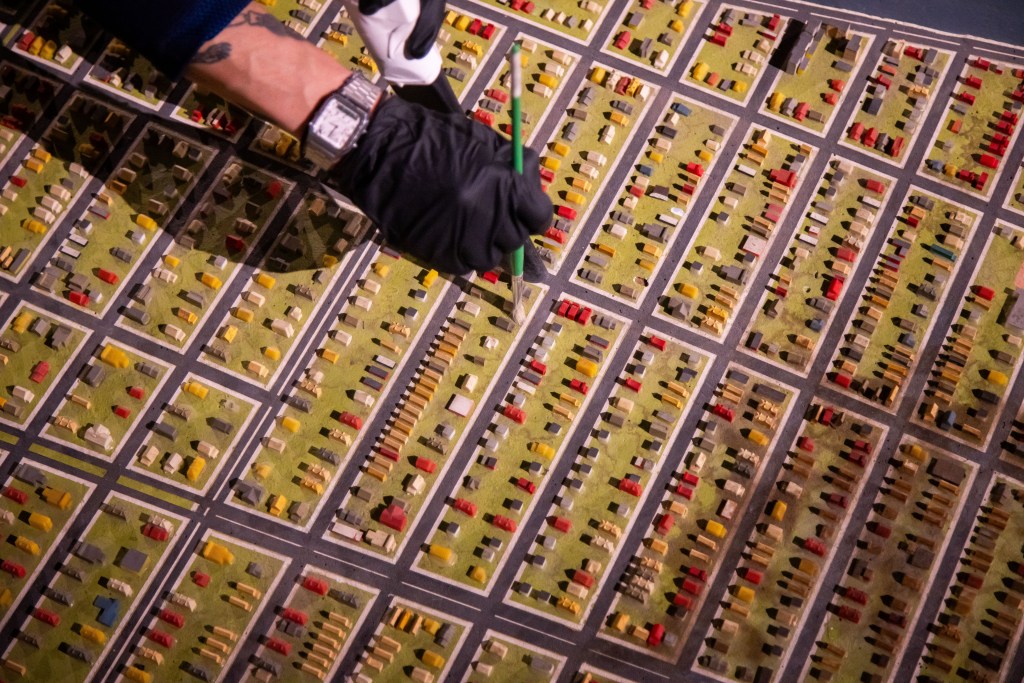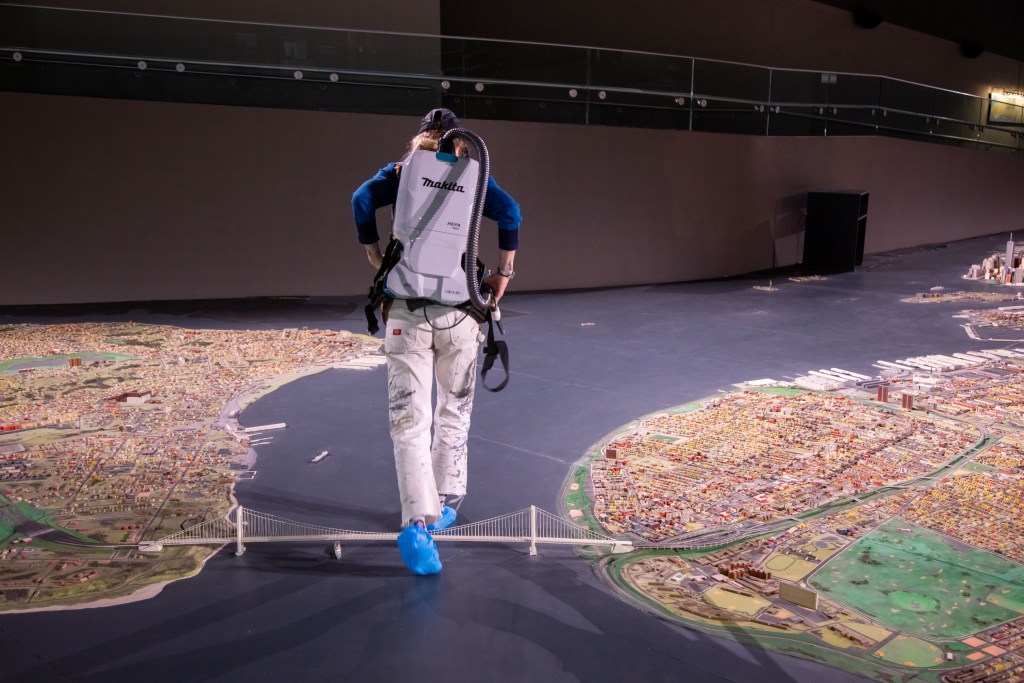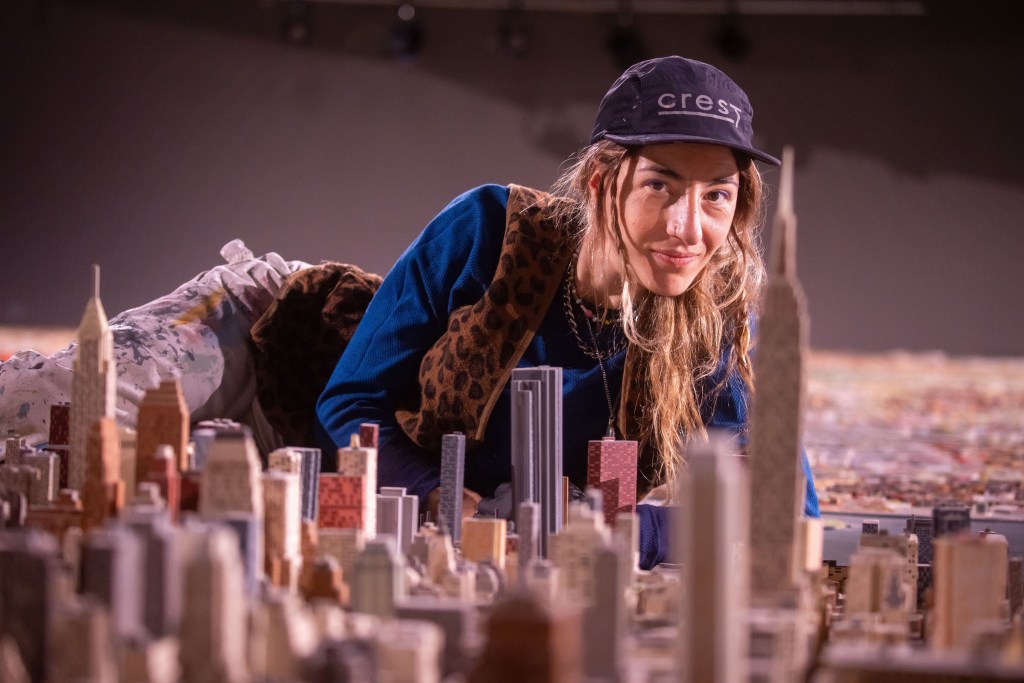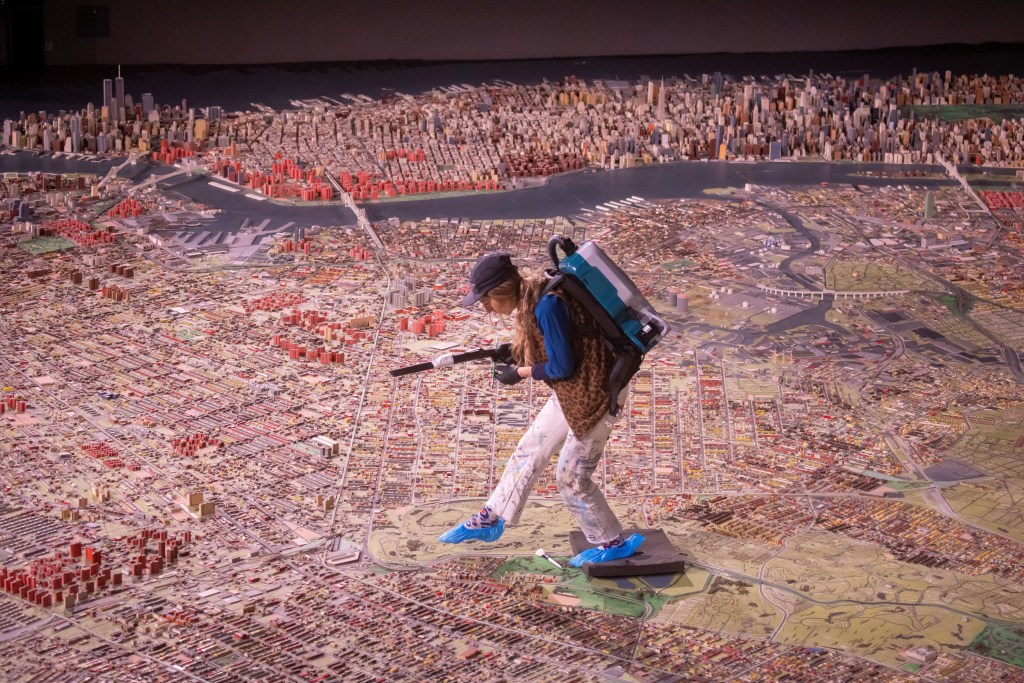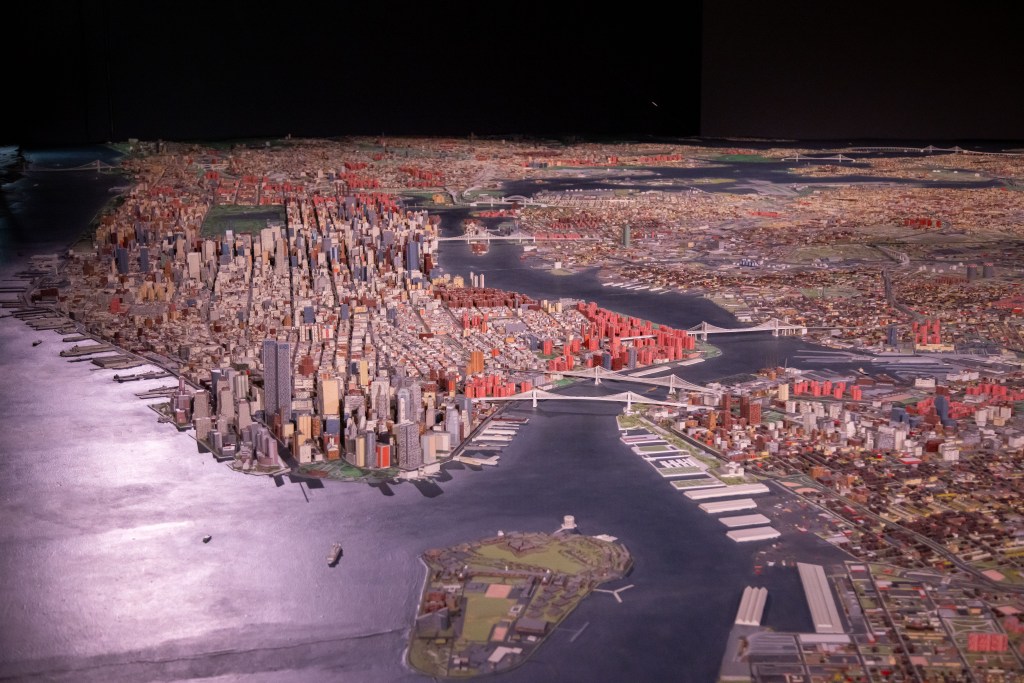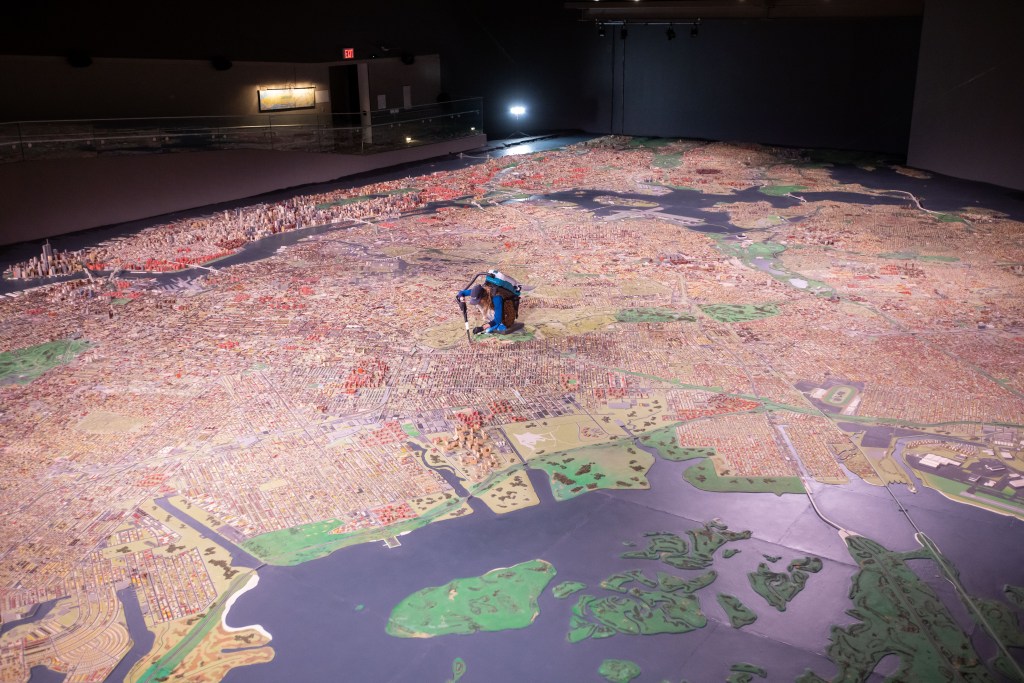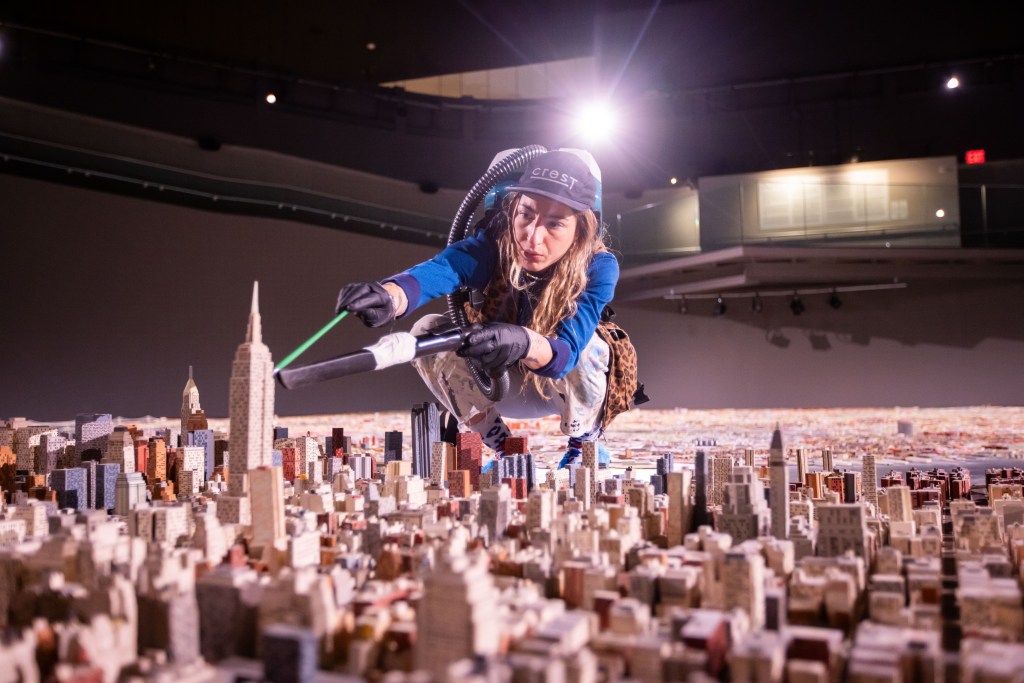Here are the wild steps lightfooted workers take to clean mini NYC ‘Panorama’ of strange debris over 90 hours
This is one monster cleanup job.
The famous Panorama at the Queens Museum is undergoing its annual deep clean — a meticulous two-week spiffing up to pluck chewed gum, tossed receipts and candy wrappers off the streets of the massive model of the entire Big Apple.
Art preparator Yezica Tutic — with a vacuum strapped to her back and surgical booties on her feet — carefully stepped over Midtown and onto Central Park Tuesday to clear a year’s worth of dust and debris wedged between the tiny buildings.
“The first time, I felt like Godzilla,” Tutic, 37, of Ridgewood, told The Post.
Tutic is one of three trusted art preparators that the museum calls on each year to deep clean the Panorama — which was unveiled for the 1964-65 World’s Fair.
It takes roughly 90 hours to scour the 9,335 square-foot model, complete with 895,000 teeny buildings, even tinier cars, delicate bridges and a constantly flying miniature airplane.
The Panorama is the crown jewel of the museum — so popular that the institution dedicated its first published work in three decades to the history of the magnificent piece.
“The Panorama allows our visitors to situate themselves in the city in an entirely unique fashion: you are above it, within it, and imagining your cumulative set of memories attached to it,” Lynn Maliszewski, assistant director of collections and archives, said.
Roughly 80% of museum visitors trek to Flushing Meadows Corona Park to lay their eyes on the miniature city, which means it catches not only piles of dust throughout the year, but plenty of litter left behind by tourists.
“This time I didn’t have to collect that much gross stuff,” said Tutic, originally of Argentina.
“The first time, there was sticky candy that was thrown in there, gum, plenty of paper receipts and stuff like that. This time it was amazing the amount of litter that people do to the Panorama was way less. I’m kind of proud of people, it’s a good thing to see.”
If the scale wasn’t daunting enough, the age of the mini-city makes the job that much harder, Tutic said. The 60-year-old urban planning tool can’t handle any water-based supplies, which would cause the paint — used to delineate residences, parks, transit and more — to completely erode.
The glue has also completely crumbled from some pieces, making them vulnerable to breaking off with the lightest touch.
“We walk through very slow because it’s such an old structure. Some of these monuments are not very steady,” she said. “It’s a very very delicate piece.”
Tutic is limited to swiffer pads, paint brushes and even Q-tips to dust off the centimeters of space between buildings. She also uses a cordless backpack vacuum cleaner, which Tutic religiously keeps punched on the lowest strength setting for fear of sucking up an NYCHA building or bus terminal.
Midtown Manhattan is the most difficult area to care for.
“Imagine the city — it’s the same. It’s very, very narrow, the streets, to clean,” Tutic said. “Usually we try to find different tools and attachments that we find from other vacuums and stuff like that or that we build ourselves to get in those areas because it’s such a tiny, tiny, tiny area.”
To get in the dense neighborhood’s nooks and crannies, Tutic has to straddle the island, with one foot planted in the East River and the other in Central Park, and bend as much as possible until her nose is nearly touching the Empire State Building.
“It’s very tricky, it’s kind of like a circus — acrobatics,” she said, admitting that the neighborhood “is the most stressful” of the piece.
Her favorite spots to clean are not only more spacious — like the airports and the museum’s home at Flushing Meadows Corona Park — but are the neighborhoods with special places in Tutic’s heart.
Last week, as she carefully swept through Williamsburg, Tutic took a moment to honor the tiny wooden version of what was once Crest Hardware. The 62-year-old shop shuttered its doors this summer — but will forever be memorialized on the Panorama.
“There’s an emotional attachment to them. It’s ridiculous. It’s amazing. It’s like such a detail orientated piece.
“Even though I am very, very, very big next to the model, I feel tiny,” she added. “It’s just like such an accurate and delicate and beautiful, the constructions of little houses and buildings and it’s so amazing how with little materials you can make pretend that this is a house, that this is a cemetery.”
Despite Tutic’s best efforts, there are some stains that have become a permanent part of the Panorama, like water damage near Jamaica Bay and a suspected wine spill near South Ozone Park.
The Panorama is set to receive some conservation in the coming months — a grant by the Institute of Museum and Library Services will fund new sets of lights for municipal buildings, replacing areas affected by water damage and a fresh coat of paint for the water, parks and public areas.
